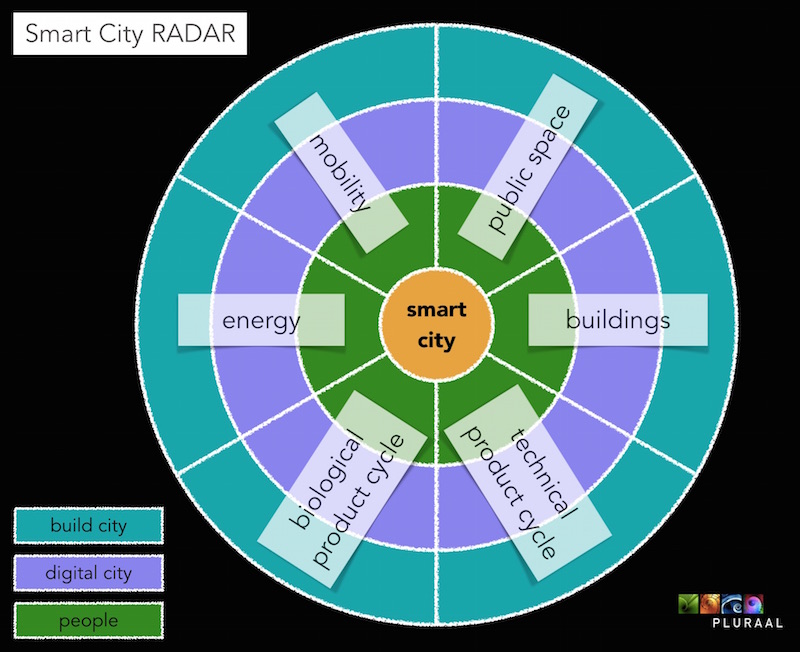In a former blog I talked about smart cities being an empty hype or not. I argued that a lot is happening, indicating it’s not a hype but merely invisible because no one is able to see the overall picture. In this blog I am presenting a tool to help making this overall view more clear.
This tool, the Smart City RADAR is based on Boyd Cohen’s smart city wheel, but different in important ways. Cohen’s wheel is showing six components of a smart city with three drivers for each component, that he uses as standards for a smart city. My radar is showing six indicators within three layers of the city: people, the digital city and the physical city.
In my wheel everything is connected and a development in one section will have consequences (either positive or negative) in other sections. In other words, my wheel is showing a holistic view and is meant to show opportunities; indicators to see connections, dependency and room for improvement.
My six indicators for a (spatial) holistic view on Smart Cities are:
– smart buildings
– smart public space
– smart (sustainable) energy
– smart mobility
– biological productcycle
– technological productcycle
For all these indicators I have several examples in the different urban layers, making it a comprehendible tool to use. The indicators are very differently perceived on the different urban levels – it may be important for a city council and the car industry to promote e-transport, but if the public doesn’t use it for lack of charging facilities, it will not work.
I frequently talk to people about urban technology and even if they are actively involved, it’s usually just in one section of the six sectors. At the most they see the relation between city, digital space and people, but never the relation with the other indicators. It’s very rare if people approach smart cities connecting more indicators, let alone see it in a holistic way. While I believe it is essential to think and act strategically. In my opinion you will miss many opportunities if you keep on looking in one section only, in terms of planning, governance and finances. But also if you’re looking to improve quality of life and sustainability you need to look beyond the narrow scope.
The Radar’s first objective is to be used for awareness and dialogue – what could we do to change and what impact does it have? This dialogue is most effective if top down meets bottom up: if city councils, big companies, public utilities and educational institutions are talking to the citizens and entrepreneurs in the city. And this tool will be of help.
If you like to know more about my Smart City Radar, please send an email to kees@pluraal.nl.


Leave a reply